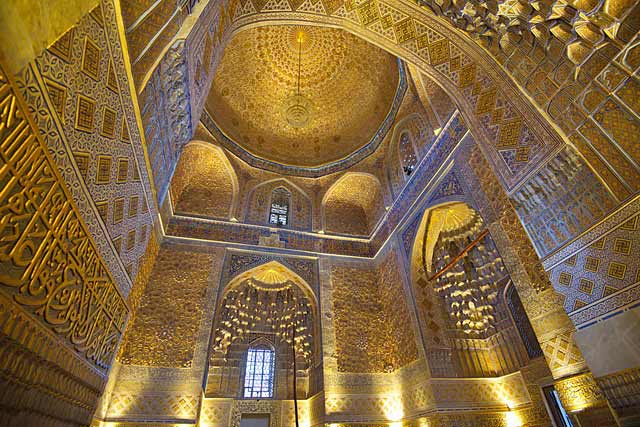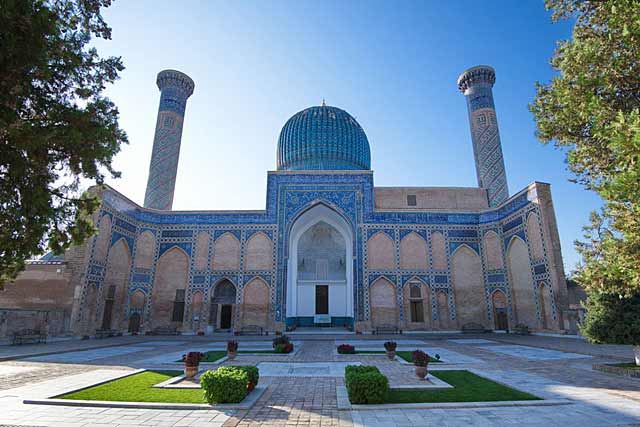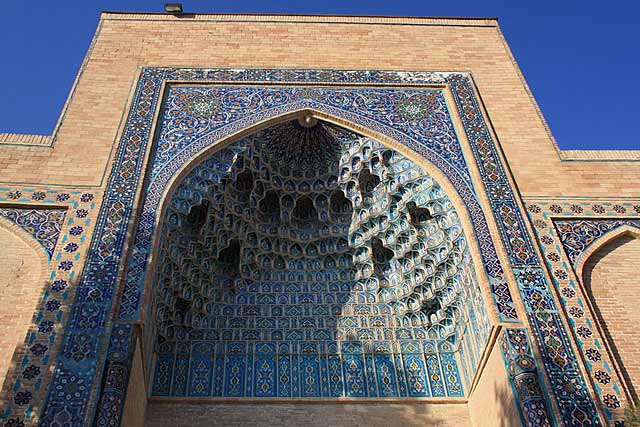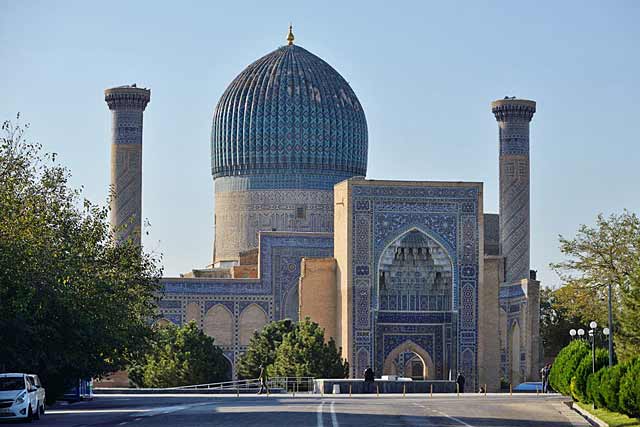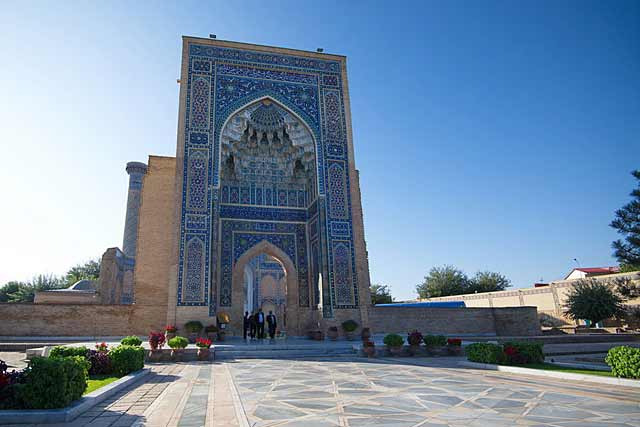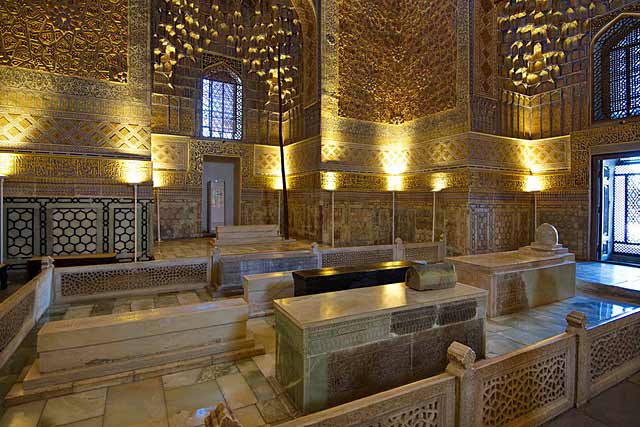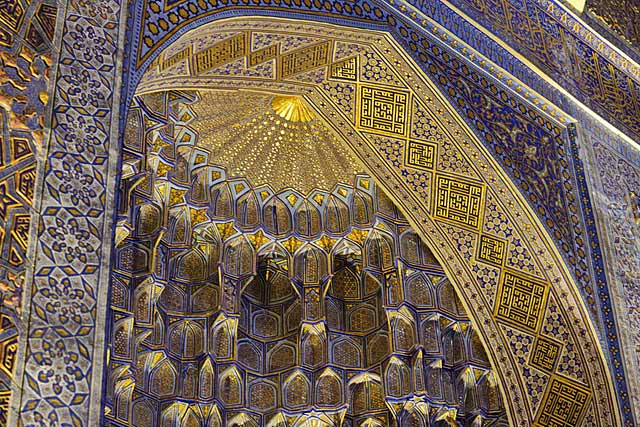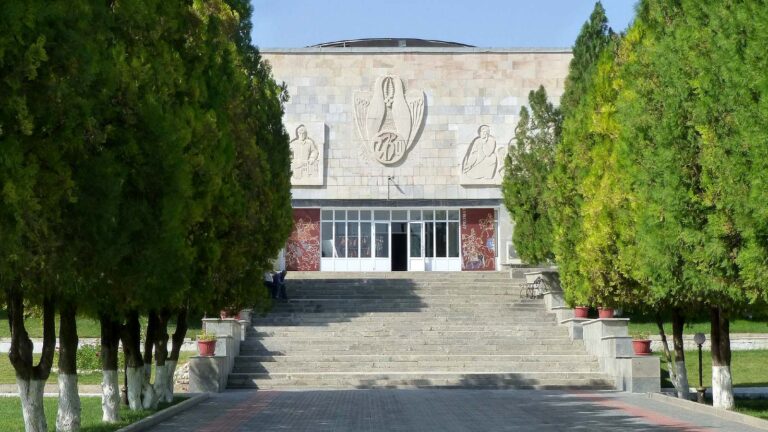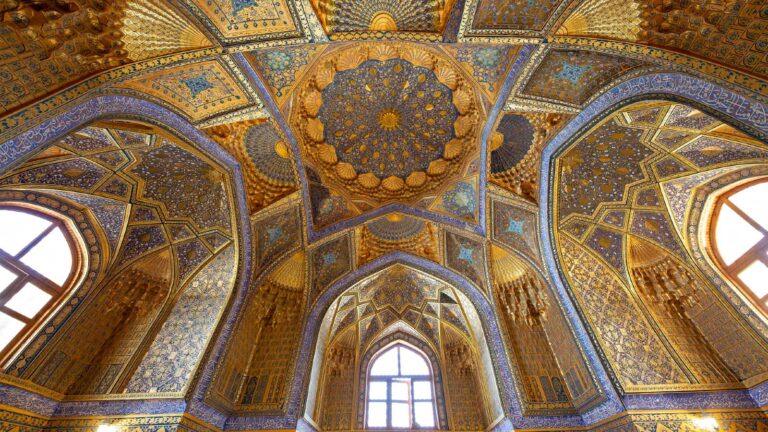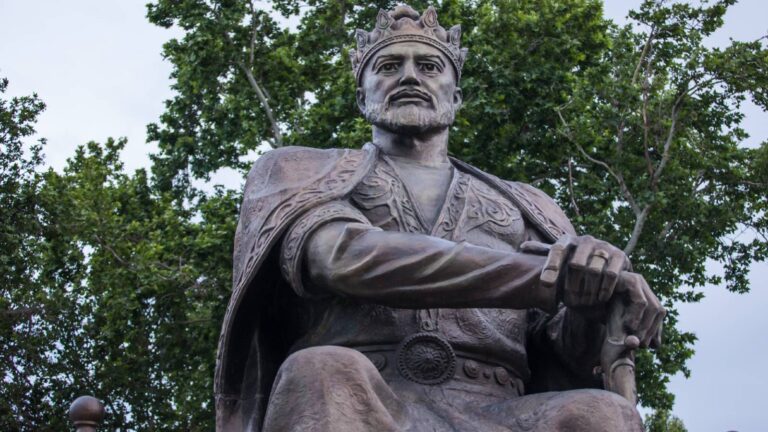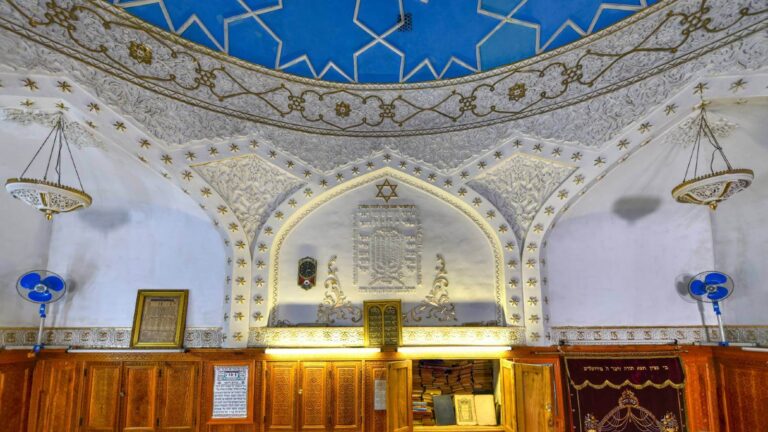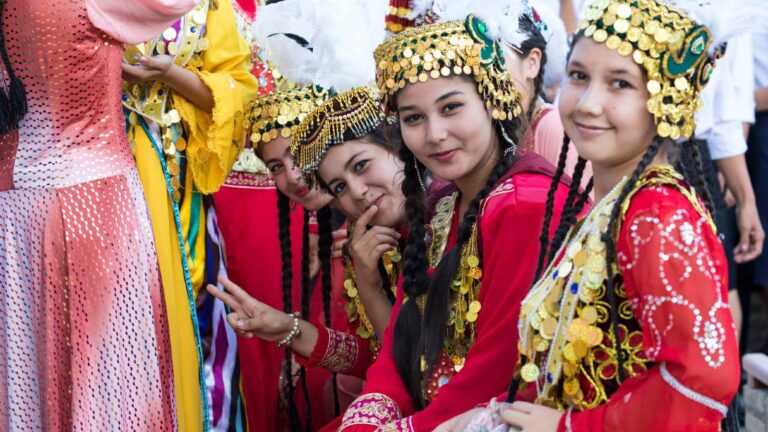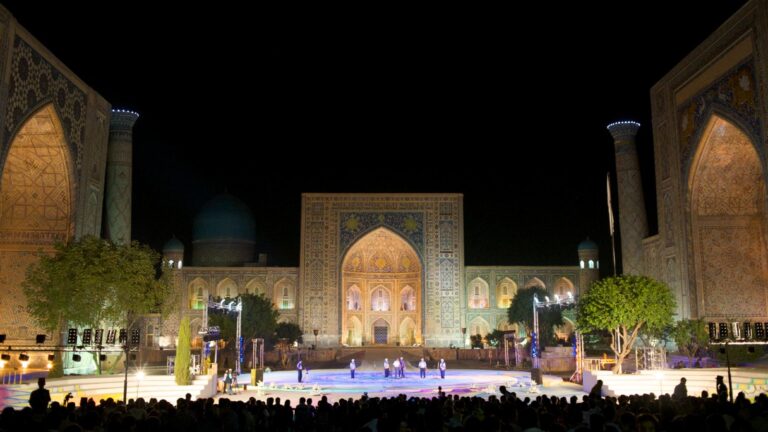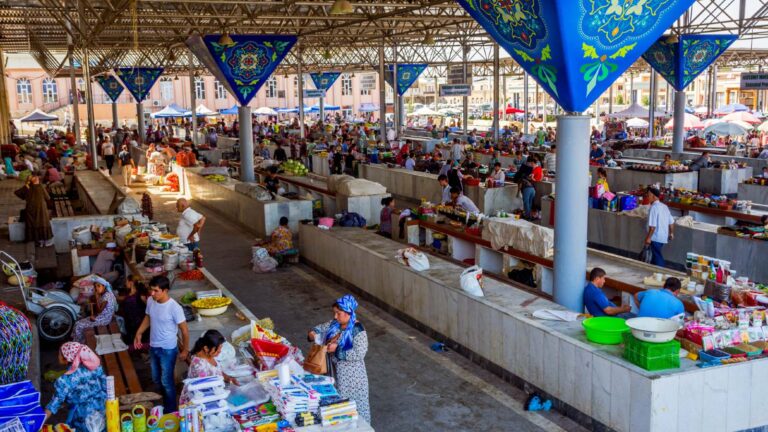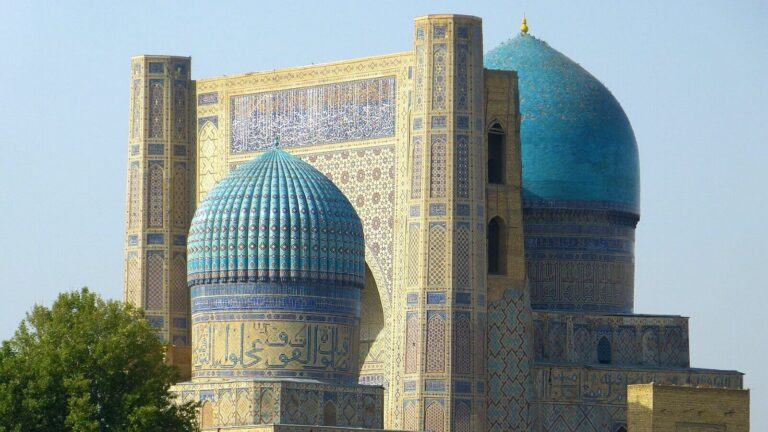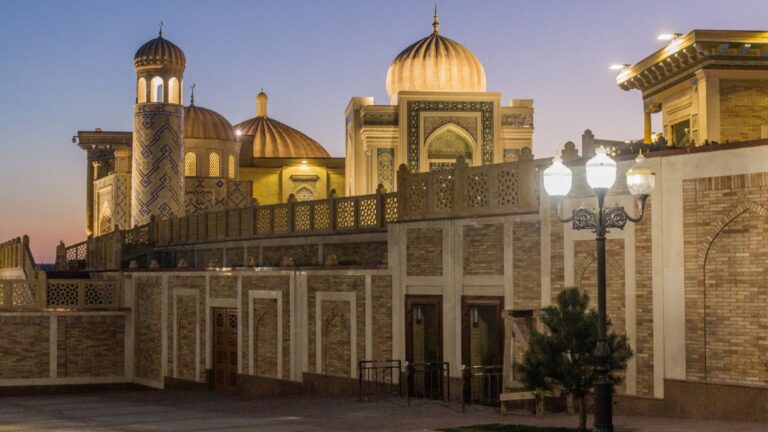Getting There
Gur-e Amir Mausoleum is located in Samarkand on Bostonsaroy Street. Due to its perfect location
the Mausoleum is easy to reach either by public transport or by taxi.
What to Expect
Completed in 1404, it was originally intended to be the tomb of Timur’s grandson Muhammad Shah,
but after Timur’s death in 1405 he was interred there as well, along with two sons and two grandsons (including Ulugbek).
As with other Muslim mausoleums, the stones are just markers; the actual crypts are in a chamber beneath. In the center is Timur’s stone, once a single block of dark-green jade. The plain marble marker to the left of Timur’s is that of Ulugbek; to the right is that of Mir Said Baraka, one of Timur’s spiritual advisors. In front lies Mohammed Sultan.
The stones behind Timur’s mark the graves of his sons Shah Rukh (the father of Ulugbek) and Miran Shah. Behind these lies Sheikh Seyid Umar, the most revered of Timur’s teachers, said to be a descendant of the Prophet Mohammed. Timur ordered Gur-e-Amir built around Umar’s tomb.
The extant structures in the complex consist of a chapel crowned with a ribbed blue-tiled dome, enclosed by a wall, and fronted by an archway. The interior walls are covered with elegant turquoise arabesques and inscriptions in gold. The Gur-e Amir is one of the properties included in the 2001 designation of Samarkand as a UNESCO World Heritage site.
History
Tamerlane had built a simple crypt for himself at Shakhrisabz, and had this one built in 1404 for his grandson and proposed heir, Mohammed Sultan, who had died the previous year. But the story goes
that when Timur died unexpectedly of pneumonia in Kazakhstan (in the course of planning an expedition against the Chinese) in the winter of 1405, the passes back to Shakhrisabz were snowed in and he was interred here instead.
As with other Muslim mausoleums, the stones are just markers; the actual crypts are in a chamber beneath. In the center is Timur’s stone, once a single block of dark-green jade. In 1740 the warlord Nadir Shah carried it off to Persia, where it was accidentally broken in two – from which time Nadir Shah is said to have had a run of very bad luck, including the near death of his son. At the urging of his religious advisers he returned the stone to Samarkand and, of course, his son recovered.
The Soviet anthropologist Mikhail Gerasimov opened the crypts in 1941 and, among other things, confirmed that Timur was tall (1.7m) and lame in the right leg and right arm (from injuries suffered when he was 25) – and that Ulughbek died from being beheaded.
Facilities Available
- Emir hotel
- Dilshoda Prime hotel
- Ak-Saray Mausoleum

